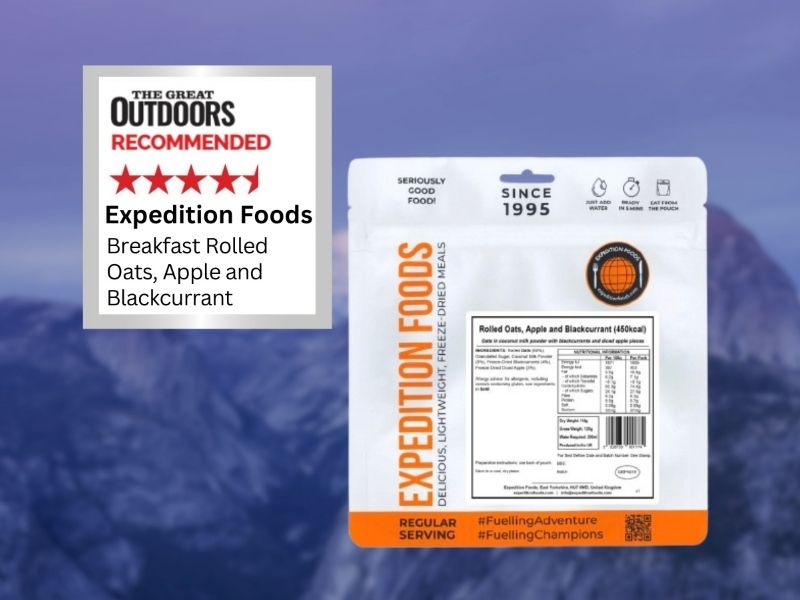-
Shop All
-
Ration Packs
-
Special Diets
- 25-Year Tins
-
Snacks, Drinks & Accessories
- About Us
Meet Arctic Explorer Henk-Jan Geel from The Netherlands
November 06, 2019
Can you tell us about yourself and your business? What kind of expeditions do you organise and who takes part in them?
Henk-Jan Geel: My name is Henk-Jan Geel and I’m an explorer and arctic guide from Utrecht in the Netherlands. I am 47 years old and I’m married to Ingrid, and we have a son. My business is called Arctic Adventure and we organise full-service polar expeditions. Full service means we take care of everything – food, sleeping bags, tents, skis, shoes, flights, local transportation…we sort out everything for our clients.
We take them to places like Norway, Sweden, Greenland, Iceland, wherever there is an arctic environment. We take them out and we do small expeditions, like hiking in Sweden, or major expeditions, like crossing Greenland. All the trips are expedition style so it doesn’t matter if you go for one week to Sweden or a whole month in Greenland – I will bring the same gear and equipment (though in different quantities).
I categorise my expeditions into three types which I call Blue Label, Red Label and Black Label.
Blue Label expeditions are entry level for novices who haven’t got any experience in an Arctic environment. I teach the participants everything from how to keep warm to setting up camp, how to navigate through the field to getting into a daily routine. These trips usually last for a week. We ski for about 100km in total so maybe 15km a day, and sometimes we go out with huskies as well for a few days.
The Red Label expeditions are a little bit longer and tougher, so over 100km between 1-2 weeks, and the Black Label expeditions are the real deal for the die-hard adventurer, going to the North Pole, South Pole, crossing Greenland, and so on.
Who takes part in them? If I look at ages the participants are mainly between 40 and 55 years old. I wouldn’t call them thrill seekers or adventures; they are ordinary people wanting to do something like this at least once in their lives.
How did you start out running expeditions?
HJG: I’ve been going to polar environments since I was about 20 so it’s been more than 25 years now. I have crossed Greenland and done some other expeditions, and given talks about them. At the end of the talks people would come up to me and ask if they could join one of my expeditions. I always thought to myself, they can be quite dangerous; it’s not like a walk in the park where you go to a store, buy a backpack and sleeping bag and then head out – you have to prepare quite a bit. So I said to myself, if there are so many people wanting to do this, I’ll do all the preparation, I’ll take care of all the equipment, and this way they can go out there responsibly, safely and enjoy their week out in the snow.
What training do you do and what do you recommend for participants on an expedition?
HJG: This really depends on the trip they are going on. For people doing Blue Label expeditions, I tell them if they can run for 10km in a straight line, or if they can walk for 10km with a 10kg backpack every day for 10 days, they will be fine. If you’re doing a Red Label expedition, it’s 15km running or walking 15km with a 15kg backpack for 15 days in a row, and Black Label it’s 20.
I tell my clients to go out and start walking, go out in nature and hike. You don’t need to be able to run a marathon but you do need endurance.
Having the right kit is obviously critical to an expedition. What are the main items that you think are essential and what items are often overlooked, in your experience?
HJK: Well for polar expeditions, the main item is actually your stove. You can’t do without a good stove. You need water to survive and if your stove is broken you can’t melt snow, and there is no other easily available water resource. On expedition I bring a spare stove, good fuel and spare parts.
Also your shelter, either an emergency shelter or your tent, and I think a good sleeping bag and down jacket are also essential to shelter yourself from the environment.
These are the main three or four things, I think, to survive. Of course, it’s handy if you have a sledge, skis, boots and so on, but a stove – that’s the most important thing.
In my experience, most people who go out in the snow prepare well. If anything, they over-dress. They put on too many clothes and they start to sweat. The sweat then freezes on your clothes and then they’re getting cold.

You have spent a lot of time in the polar regions. What effects from climate change have you seen and witnessed? What do you think can be done?
HJG: That’s a big question! What I have witnessed is more extremes in the temperatures. Last year I was in Kiruna and what I experienced was the weather, which in my head I then have to work into the climate because the climate is talking about 30 years but what I see is the weather. And last year in Kiruna, one day in February, it was like 3 degrees below zero instead of 20 degrees below zero so it was really warm. Now I was there for maybe one or two weeks but when I talked to the locals they told me that in December there was hardly any snow and normally you can’t even walk through town because of the snow.
So what I notice is that it’s getting warmer in the Arctic regions. What I also notice is that there is a lot of melt during the season and it freezes again during the season, meaning that there is a lot of ice crust on the ground making it harder for animals to get to food. I haven’t seen any dead animals but this is what I have noticed myself.
Personally I think governments need to take a big stand and take drastic measures, either tax wise or through regulations, because humans, on an individual basis, are too asocial, are thinking about ourselves and our good lives, and we are not doing anything about climate change. I think our governments have to get a little bit more dictatorial, be bold enough to take a stand, in order to come up with real solutions which will combat climate change. Meaning cut down on plastic, cut down on carbon fuels. It won’t be nice because we all have to step down from the convenience which we are used to.
That’s my personal view and I wouldn’t mind some kind of dictator, leadership politics going on when it comes to the environment.
Can you tell us about your most recent expedition?
HJG: Well I could spend hours talking about my last expedition… It was in Greenland in May this year. I guided two clients from the west cost to the east coast of Greenland. You would have noticed because I ordered the food from Expedition Foods!
Talking about food, I always prepare my breakfast myself because I think it’s nice to work with the food and know what’s in there. So it’s something I prepare myself with muesli, chocolate, cocoa, a little bit of salt and cinnamon, a lot of nuts and some powdered milk so it’s dry. During the day we eat a lot of nuts on expedition, we some eat cookies, drink tea, drink soup with bouillion. And in the evening we have soup again and an Expedition Foods meal, and some crisps as a kind of dessert to add some salt to our bodies.
This is what we eat more or less 30 days in a row and I think it’s still nice to eat. I take good care of my food so that I know I won’t be fed up with it after 30 days. When I started out doing expeditions, I also took chocolates like Snickers and Bounty Bars and Twix, those fast sugars, but after 10 days I got fed up and couldn’t handle them any more. Now, normal rations without too much sugar or too much chocolate are fine for me and I can eat them for maybe two, three, four months in a row, no problem.
So going back to my last trip, after 24 days we ended up with a helicopter pick up in the east side of Greenland which was a couple of days early because on day 24 I broke my ankle…I fell, my ski got stuck in the snow, I fell on my back and twisted my ankle. Which is unfortunate but those things happen during expeditions (well, they can happen. It’s a risk.)
Tell us about any plans you have for 2020 or beyond.
HJG: This coming season I have a lot of nice trips. I start off with a trip to the northern part of Sweden which I call “go with the flow”. On this trip we will follow a frozen river, so the flow isn’t there any more as it’s completely frozen. We will follow the Tornälven river, which goes from Abisko, and head south ending where the famous ice hotel is, our end point. It’s about 110km and will take a week.
I have the Arctic Grand Slam which is 3 days back country skiing, 3 days with huskies, hopefully see the northern lights and we will visit at the ice hotel, and it will all be above the polar circle so on one trip you can tick off at least five items on your bucket list.

In March I go to Hardangervidda, a high plateau in Norway. The great thing about this trip is it’s called the Heroes of Telemark. In the second world war, special forces from both Norway and Britain sabotaged a heavy water factory in the south of the Hardangervidda, which was under Hitler’s control. During the expedition, I and seven participants will follow the footsteps of the special forces, we’ll pass some of the huts where they stayed, and at the end of the week we will visit the heavy water factory and have a private tour.
For 2021, I want to go to Russia, across Lake Baikal. I will go to Iceland across a glacier there, hopefully I will cross Greenland again in May or maybe September. So I have some nice trips on my list; the world is getting smaller but it’s still a big place to explore. I want to go to the North Pole, the South Pole, to Murmansk in Russia, I would love to see the Patagonian ice sheets… so there’s a lot to explore and I hope I can bring a lot of participants out there to have the time of their lives.
To find out more about Henk-Jan’s trips visit https://arcticadventure.nl/
Also in Stories

Eat, Paddle, Sleep, Repeat: Life on the Yukon 1000
November 06, 2025
Firsthand account of completing the Yukon 1000 in 7 days; what we ate, packed, and learned about food, sleep, and self‑reliance on the river.

Expedition Foods Breakfast Earns Praise from The Great Outdoors Magazine!
September 29, 2025
We’re proud to have received a glowing review for our plant-based breakfast, Rolled Oats with Apple and Blackcurrant, that’s not only nutritious and delicious but also mindful of dietary needs and environmental impact.

Rowing Across the Mediterranean with NOMAN
May 16, 2025
40 degree heat, sea swells, salt sores, blisters, dehydration, sea sickness… The decision to take on the adventure of rowing across the Mediterranean is not one that is taken lightly.



